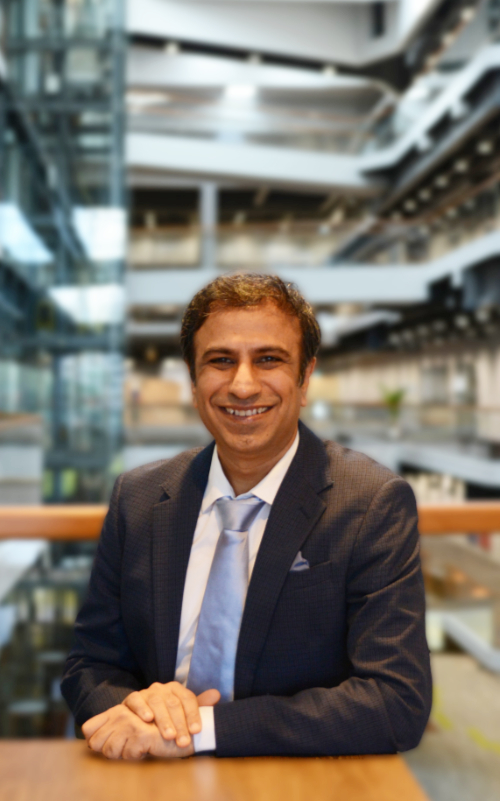Over two years in and the reverberations caused by the COVID-19 pandemic are still felt – and the lighting industry is no exception. Jitender Khurana, Country Head and Managing Director at Signify Singapore, talks about the lessons learned in his sector, as well as the changes since.
As 2022 gets busy, what are your top three priorities for the year?
My first priority is to continue to lead Signify Singapore to place our customers at the centre of everything we do. This involves bolstering our digital capabilities to improve customer experience, strengthening our quality standards and performance, and continuing to adapt to challenges caused by the global supply chain crisis to minimise disruptions to our customers.
Sustainability is another priority for me. We achieved carbon neutrality for our operations in September 2020 but the journey certainly has not stopped there. Through our Brighter Lives, Better World 2025 program, we will enable our customers and suppliers to become more sustainable.
The third priority is about our people. Transitioning out of the pandemic will continue to impact the physical and mental health, safety, and well-being of our employees and their families and we want to continue to support them during this period. At the same time, we will continue to build a strong learning culture, a diverse workforce, and an inclusive work environment.
What were some of the biggest lessons of 2021? Have we learned these lessons, and is the world ready for another pandemic?

One of the biggest lessons learnt, as COVID-19 continued to disrupt the world in 2021, is the vulnerability of the global supply chains. The supply chain turmoil has escalated to become a massive threat to growth both at the corporate and country levels.
It is critical for businesses to reimagine and manage their supply chain differently to ensure business continuity and growth while mitigating the risks to human health. Strong data and analytics capabilities are crucial in understanding complexity, anticipating potential disruption, and quickly developing a response when facing current and future pandemics.
Another key lesson for corporations is the importance of having a strong company culture and understanding the needs of their employees. The pandemic has brought about a global shift in employee mindset that has led to a monumental exodus of talents – a phenomenon known as “The Great Resignation”. Businesses must grab the opportunity to create new models of working and develop deeper insights about employee needs and aspirations to recruit and retain talent.
The world is still on the way to recovery and clearly we need time to figure out solutions for challenges surfaced by this pandemic. But I believe that the lessons learnt over the past two years will strengthen our resilience to face future threats.
What do you see as being the most impactful technologies coming into play over the next year? What are your broad technology predictions for 2022?
As data remains a central asset that will drive the future of business, Internet of Things (IoT), edge technologies, big data processing and analytics, and machine learning will continue to grow in scale and impact. The key is not to blind collect massive amounts of data, but extract prime information to generate high- efficiency processes.
How has your workplace transformed over 2021, and what are your precise workplace transformation strategies for 2022?
In 2021, one of our actions was the installation of UV-C disinfection devices in 138 projects in our offices and buildings worldwide.
For 2022, work is underway to publish our first annual Diversity, Equity and Inclusion report. We are also looking to double the percentage of women in leadership positions to 34% and achieve 40% to 60% gender balance targets for the management and professional levels of our organisation by 2025.
Could you talk about the IT infrastructure that supports the operation and management of Signify?
We have been making solid progress in digitalising our operations. In the face of supply chain disruptions, we have improved demand, supply and inventory optimisation processes to enhance our service levels. We have also digitalised, standardised, and automated most of our product handling and inventory management in digital manufacturing to boost visibility and productivity for our warehouses.
Another achievement in the past year is the consolidation of our global digital organisation, combining three pillars of our digital transformation – digital, data and IT – to increase synergies in our strategy and delivery model.
How will your vertical be impacted by the pandemic and the post-pandemic reality? What will the “new normal” look like for your industry?
The pandemic has compelled accelerated transformation across industries and countries, and lighting technologies have become pivotal enablers for adapting and thriving in the new normal.
For example, in light of the pandemic, the Singapore government has introduced a SG$30 million grant to increase local food production to reduce its dependence on food imports with its “30 by 30” vision. This calls for advanced horticultural lighting technologies to support local producers to utilise high-efficiency farming systems to raise their output. Signify launched a virtual centre of excellence in November 2021 to offer profound research insights and advanced lighting solutions for growers, to support smarter, more sustainable urban vegetable farming in Singapore and the region.
As life transitions to a pre-pandemic level of activity, everyone is seeking a solution to keep offices, malls, buses, and trains – as well as homes – continuously disinfected. This has led to skyrocketing interest in UV-C lighting, due to its extraordinary power to disinfect quickly and safely.
















